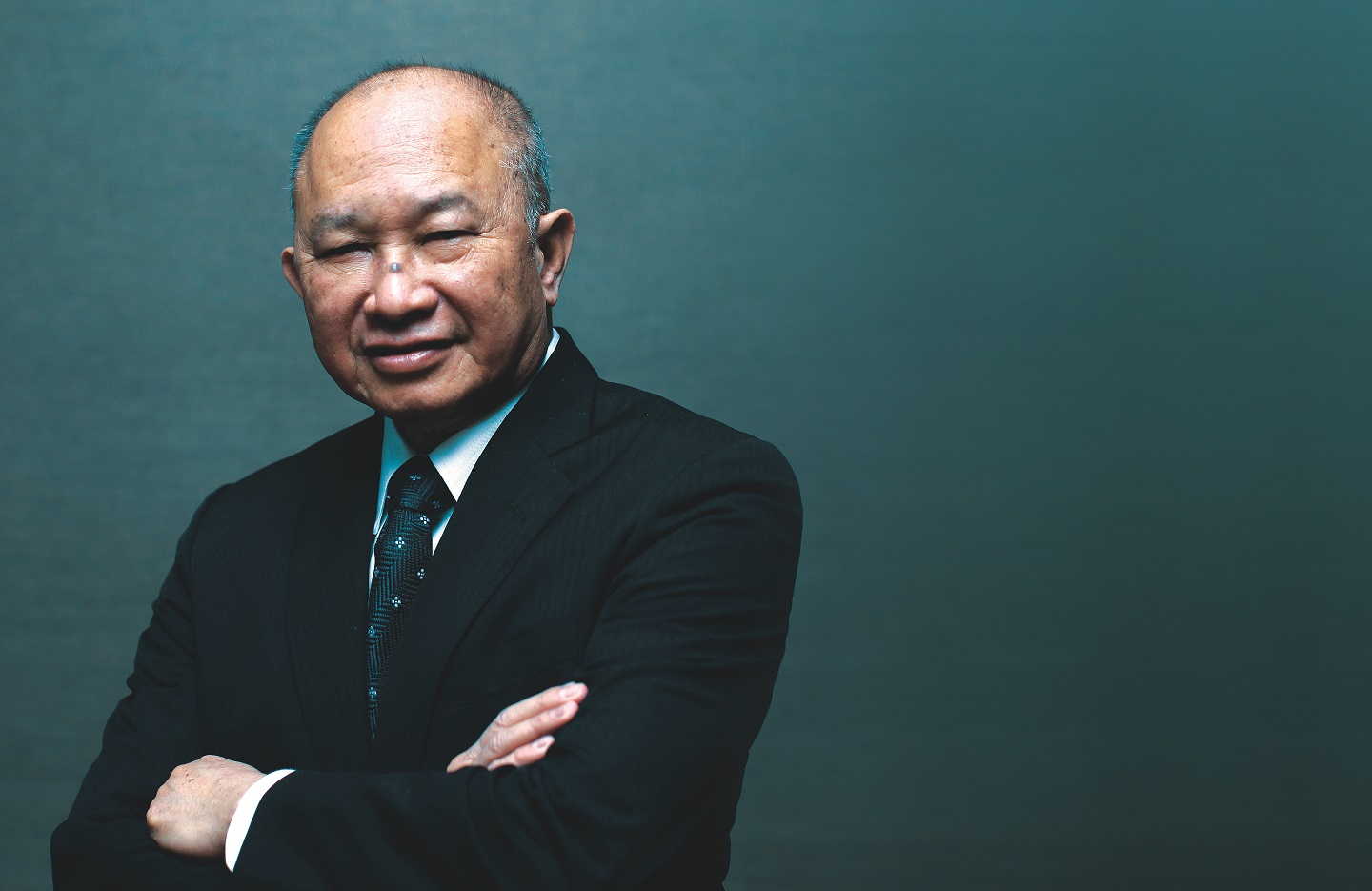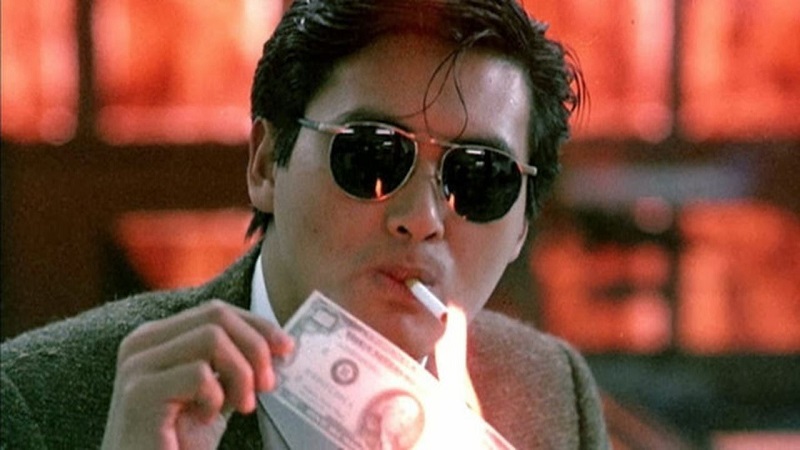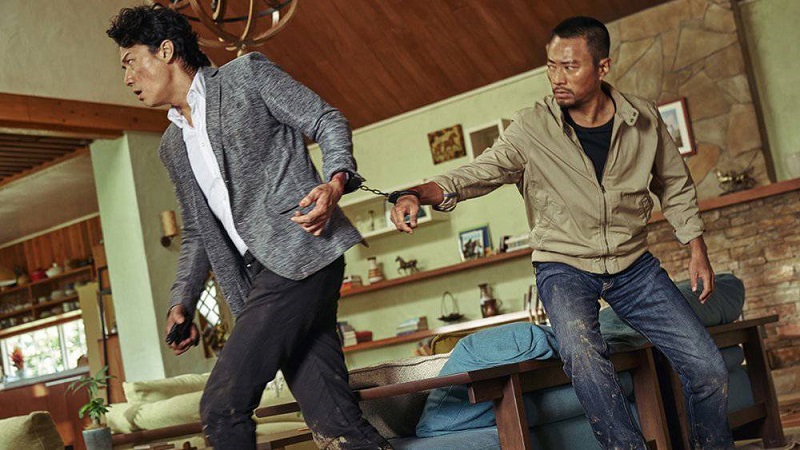
(Photography by Mohd Izwan)
For a maestro of action films, John Woo is incredibly soft-spoken and somewhat reserved, though genial. But he did say at one point in our conversation at the Dorsett Kuala Lumpur — the director was recently in town to promote his latest film, Manhunt — that film is his only outlet for creative expression.
Woo, 71, is a man of paradoxes. The hallmark of his long career is his ability to create action sequences that are dazzlingly poetic in style yet spectacularly violent in their entirety. His films, with gritty themes of triads and anti-heroes, are often played out with an almost theatrical flair. Critics allude to tones of grace, sentimentality and freedom when describing his work, often in the same sentence as conflict and death.
Throughout our conversation, Woo makes references to the human element and real emotions as key ingredients in his movies, which, quite frankly, seem at odds with his immoderate brand of action - which is also the foundation for his cult-status reputation and track record for butting heads with studio bosses and film censors.
A quote from a book based on a series of interviews Woo did with film writer Robert K Elder comes to mind: “I never try to glorify the violence. I try to never use the violence to please the audience. I like to use the action to send a message…”
While it would not be wrong to point out that intention does not justify the means here, what is intriguing are the seeming contradictions in his nature. In a 2002 interview in The New York Times, Woo said he had once wanted to be a man of the cloth and that the church was one of his sanctuaries, the other being the movie theatre.
Both provided escape from reality during his teenage years in a shantytown in Hong Kong’s Shek Kip Mei during the 1950s and 1960s. The equivalent of a refugee camp or squatter area today, it was filled with gangs, drugs, gamblers and prostitutes. Woo recalls having to contend with gang ambushes daily, and often ending up wounded and bleeding.
I never try to glorify the violence. I try to never use the violence to please the audience. I like to use the action to send a message…
Despite a difficult childhood — the family relied on handouts and his mother’s small income from working several jobs after his father died of tuberculosis — Woo somehow managed to immerse himself in movies. Through the influence of his film-loving mother, he would remove himself from the streets, even if it was just for a few hours, and step into the world of Fred Astaire and Judy Garland and their musicals, a genre he fell in love with.
After he stopped schooling at the age of 16, movies became a consuming obsession. Woo devoured European, Chinese and American fare alike, and was strongly influenced by the French New Wave and French gangster films, Hollywood directors Stanley Kubrick and Martin Scorsese, as well as Japanese director Akira Kurosawa. The melting pot of influences and his personal experiences while growing up have become the essence of a “John Woo film”, though that took a long while to find acceptance on the silver screen.
By the time he was 22, Woo was experimenting and making his own movies with friends using borrowed equipment. He also stole books on filmmaking from the library to teach himself the technical aspects.
His first job was as a script supervisor at Cathay Studios. On the side, he dabbled in acting. In 1971, after moving to Shaw Brothers, he got to work under one of his idols, martial arts film director Chang Cheh. Within two years, Woo began working on his first film, The Young Dragons, which featured the young Jackie Chan as a fight coordinator. The movie marked the beginning of a recurring pattern that would dog his career: A knife-fight scene that was deemed too violent led to the movie being shelved for two years, though it was later released to moderate success.
In the 1970s and early 1980s, Woo made a name for himself in Hong Kong with a slew of kung fu films and comedies. By then, he was tired of the formulaic process and lack of creative voice in the industry. Feeling stuck, Woo attempted to break the mould with Heroes Shed No Tears in 1983, a tale about mercenaries sent to capture a drug lord in Vietnam. It marked a watershed in his career, but Woo met with such strong opposition from studio heads for the film’s ultra-violent action (going by the standards then) and reportedly made so many enemies that many felt it was the end of the road for the young talent.
A meeting with another well-known director, Tsui Hark, proved to be a turning point. With Tsui’s encouragement and help, Woo decided to give it another go with A Better Tomorrow, about a man torn between two worlds and his loyal best friend, Mark Gor. Chow Yun-Fat had a supporting role in the film, but fans were so smitten by his sunglasses-and-trench-coat-wearing character, he became an icon. (The Ray-Bans and black trench coat Chow wore sold out in stores within a week of the film’s release.) A Better Tomorrow marked a new “golden age” for Hong Kong cinema, with guns replacing fists and the dawn of its now-signature gritty tone.

For Woo, the film took him out of Hong Kong into Asia and beyond, including a showing at the Toronto Film Festival in 1987 that fanned a cult following. Subsequent action classics, such as The Killer and Hard Boiled fed his popularity, regarded as brilliant marriages of Eastern theatrical martial arts films and Hollywood-style gangster films — thus the term “gun fu”. Stylistically, the ferocity of Woo’s double-guns blazing choreography, complemented by slow-motion shots and the gun-to-the-head Mexican standoff have influenced a generation of filmmakers, including the Wachowskis, Quentin Tarantino and Steven Spielberg.
Action sequences aside, most of Woo’s films are anchored to a central figure, or two. Again, the themes of tension and opposition come into play, as seen in Manhunt. Yamura (played by Masaharu Fukuyama) and Du Qiu (Zhang Hanyu) lead the cast. “I love for a film to have some humour, especially between the two male leads, who come from different cultures, personalities and working styles. It creates a more dynamic chemistry and, ultimately, makes the characters more human,” Woo says.

It is a formula he made famous in A Better Tomorrow, through the friendship between Mark Gor and Sung Tse-Ho (played by Ti Lung). Incidentally, Manhunt is seen as a return of sorts for Woo — albeit a parodical one — to the genre he is best known for in more than a decade, after venturing into dramas and historical epics such as Red Cliff and The Crossing in the last few years. What is not a coincidence is that both characters — Mark Gor and Du Qiu — are based on his favourite actor, the late Ken Takakura.
“I was really sad when he died suddenly; I had wanted to work with him. He was the actor I respected the most. I’ve watched his films since I was young and am very much influenced by his persona, his acting style … When I did my movies, I drew from Takakura’s style and imbued my main characters with it, such as the sunglasses and trench coats,” Woo shares candidly.
Just as he was ruminating a tribute film to the legendary Japanese actor, Media Asia sent him a script for the remake of Manhunt. Based on a novel, Kimi yo Fundo no Kawa o Watare, by Juko Nishimura, the original 1976 movie starring Takakura was a mega-hit in China and Asian cinema.
Woo’s version has a contemporary setting for the story about a lawyer on the run after being framed for murder. “I found out later that the rights given were actually for the novel. To avoid creating scenes too similar to the original film, we reset the backdrop to current times,” he explains.
The director admits the film includes the usual stylistic details, including his signature scene of white pigeons flying around, presented tongue-in-cheek here. The film ends with the tongue-in-cheek line, “Tomorrow is a better day”, while a sideways finger-gun gesture by another character hams up another Woo trademark.
Featuring a cast of Chinese, Japanese and South Korean actors, Manhunt pays tribute in a big way to the 1960s, the era the novel was set in. “I miss that, because the movies then were more emotive. I feel … it has that particular flavour,” he says with a smile. Visually, Manhunt certainly is appealing, reminding us why Woo excels in his delivery even in the most mundane scenes. The film, which had more than a couple of cringeworthy moments, could have benefited from a better script, with lines delivered in the actors’ native languages instead of English.

In a career with as many hits as misses, Woo’s somewhat polarising filmography reveals a director not bound by his own reputation, who is determined to go his own way. He is one of the few Asian directors who have not only entered Hollywood (Hard Target with Jean-Claude Van Damme in 1993, Face/Off with John Travolta and Nicolas Cage in 1997, Mission: Impossible 2 with Tom Cruise in 2000), but was in fact fiercely courted in the 1990s and early 2000s, pinned as the bringer of change. While Woo found commercial success, that relationship ultimately ended in disenchantment on both sides. He felt hampered by differences in the filmmaking process and the Hollywood studio machinery. On its part, Hollywood was enamoured with Woo’s brand of action but wanted him to fit its mould with his American work.
Woo revealed his artistic dissatisfaction during that period in subsequent interviews. While he made efforts to broaden his scope in Windtalkers, the film was not well-received by enduring fans or American audiences in general. An article by The Guardian in 2009 highlights the marginalisation of one of the “most influential directors making movies today”, in reference to Woo leaving Hollywood. But the most interesting, if short, paragraph in the article concerned Woo’s return to China and the release of Red Cliff, which was a huge success in Asia, though it generated little interest in Western cinemas.
Woo’s comments on Asian filmmakers looking to the West in today’s context is pertinent: “I think, whether it is Hollywood or Asian cinema, there is one common problem — that is, [having a] good script or story. There is a drying up of new and original ideas. But in China, there is still room for growth, as they have just started out, have a large audience base within the country, and have no problem with finance. There is still a lot more potential to expand on.
“I had predicted and expected that interest would shift to China for new inspirations and creative ideas. When I left Hollywood to return to Asia, there was already a plateau [in the former]. Of course, Hollywood later grew in the areas of computer-generated imagery-driven action films and fantasy or animation films, but if you talk about a strong script or fresh original idea, there weren’t a lot … Technique-wise, a lot of Hong Kong or Chinese filmmakers have picked up very quickly and are on par with Hollywood, they don’t need to court them.”
I think, whether it is Hollywood or Asian cinema, there is one common problem — that is, [having a] good script or story. There is a drying up of new and original ideas. But in China, there is still room for growth, as they have just started out, have a large audience base within the country, and have no problem with finance. There is still a lot more potential to expand on
Woo laments the reliance on technology and effects-driven spectacles in films today, with little space left for more artistic or individualistic films, in terms of audience interest or support. He adds that the playing field is further crowded by low-budget or bottom-line movies.
As a caution to upcoming Asian directors, Woo says the aim should always be just to make a good film. “I think first, one has to look at oneself. Focus on making a good film, and they will come knocking. I think movies today lack a certain soul or feeling. This emotion can be a very localised flavour, regardless of technology or effects. Today’s audiences have seen it all and with the web, you cannot keep up. We can never compete by copying and running after others and I don’t believe we should. I will encourage everyone to make movies the way we did in the 1970s and 1980s, when we could only rely on our creativity and intuition. It comes down to the heart and soul.”
We come back to his motivation for making movies, even after four decades. Woo laughs softly. “There are quite a few more films I want to do. After this, I will be preparing to shoot a major war film. It’s a US-China collaboration about 10 young people in World War II. Also, I really want to make a wushu film. I haven’t done one in which they hold swords.”
Woo pauses when asked about the contradiction of his films and the human element , “I feel a lot of times, film mimics real life. Apart from Manhunt, I have never followed novels or books in all my other films. A lot of the characters in my films are inspired by my surroundings and people around me. People I know, things they have done … That’s why I say my films are essentially about life and people, be they an action film, a historical epic or a contemporary movie… My themes are inseparable from the struggles of and the search for human connection, as well as the pursuit of fulfilment and joy. It’s the only way I can dive into the film.
“Society today is more and more utilitarian. If we can refocus on the spirit and beauty of life, to point back to kindness and care, and not just brush past one another on our mobile phones constantly … If movies can bring us back to that place even a bit, even if it’s a simple movie, it can touch lives.” — As good an invitation for us to step into the movie theatre and draw our own life lessons from Woo’s films then.
This cover story appeared in the Dec 11, 2017 issue of The Edge Malaysia. Save by subscribing to us for your print and/or digital copy.


